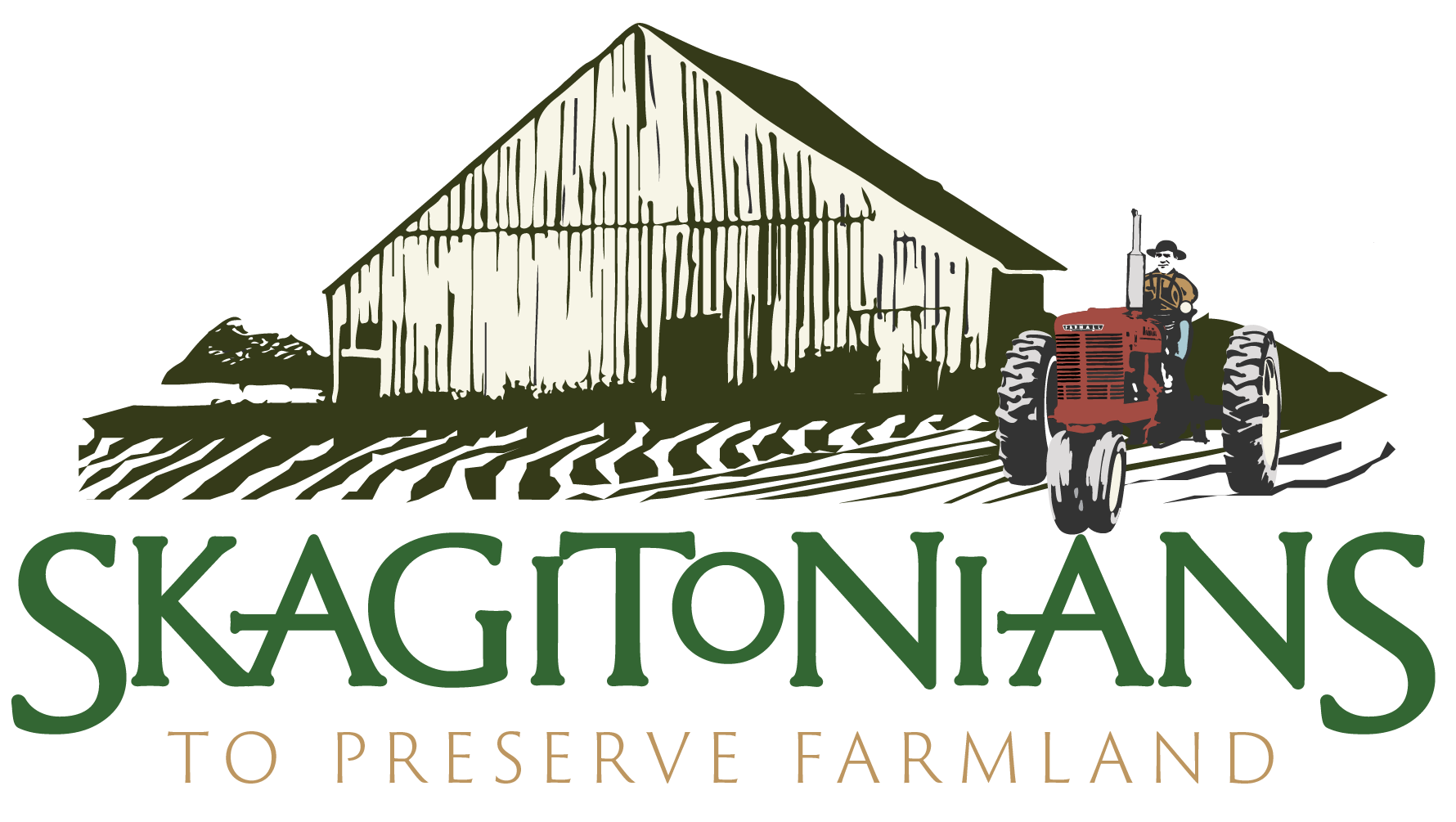The Dirt Issue 46 - Skagit Drainage and Irrigation Districts Consortium
In Skagit County, water—how it’s used and how it’s managed—is a defining issue for many constituencies. With so many claims made on the water supply, the subject of this issue of The Dirt is of paramount importance to the viability of Skagit agriculture, sustainability of local fish populations and mitigation of flooding events.
Skagit Drainage and Irrigation Districts
From the earliest days of agricultural development in Skagit County, farmers came together to install and maintain infrastructure that would drain the land when saturated, keep saltwater from intruding into farmland and provide systems to stem the effects of flooding. In time, this localized cooperation became a formal structure, legally established as Special Purpose Districts. To quote MRSC.org (Municipal Research and Services Center), “…the Washington legislature has enabled more than 80 different [types of] special purpose districts. [They] are limited purpose local governments separate from a city, town, or county government.
They provide an array of services and facilities… that are otherwise not available from city or county governments.”Skagit Drainage and Irrigation Districts Consortium Executive Director Jenna Friebel explains the “limited purpose“ of drainage and irrigation districts as follows, “They are responsible for maintenance and operation of drainage infrastructure, tidegates, culverts, ditches and pumps.
This requires extensive environmental permitting, annual maintenance work, and planning for capital improvements to replace aging infrastructure. Many of the districts are also responsible for inspections of marine dikes and levees that provide flood protection for residents and farmland. The districts also serve as irrigation improvement districts. This means they are responsible for managing water generated within the district for irrigation purposes during the summer months.”
Responsible and Capable
Drainage and irrigation districts serve the landowners who own the land within the geographic boundaries of the district. Unlike other forms of government, only those who benefit from district services pay for them. The county treasurer handles the collecting of the funds and their distribution, but the work itself is accomplished under the direction of elected commissioners. Each district has at least three commissioners who serve six-year terms. It is hard, demanding work performed in addition to their primary jobs, which may often be farming. Whether it is coordinating maintenance or responding to an emergency situation, their response is both timely and direct.
New Rules, New Challenges
The infrastructure of drainage ditches, culverts and pumps are in place to facilitate drainage, but in those months when rainfall is slack, they serve the dual-purpose of providing reservoirs of water to be accessed for irrigation. Maintaining the infrastructure by such tasks as removing accumulated sediments from ditches or repairing/replacing culverts requires permits. Those permits are issued by following provisions of many laws overseen by many agencies. A recent application for a maintenance permit sought by just one district was subject to review by the U.S. Army Corps of Engineers, National Marine Fisheries Service the Washington Department of Ecology, and the Washington Department of Fish and Wildlife, in consultation and coordination with local Treaty Tribes. It touches upon issues relevant to the Clean Water Act, the Rivers and Harbors Act, Coastal Zone Management Act, Tribal Treaty Rights and the Endangered Species Act, to name just a few.
Time to Join Forces
In September 2017, twelve Skagit County Drainage and Irrigation Special Purpose Districts formed the Skagit Drainage and Irrigation Districts Consortium (Consortium). The twelve districts retain their autonomy, but choose to seek synergy in select areas, not the least of which is navigating the permit process. According to the Consortium, “Commissioners of member districts believe that sharing information and comprehensively responding to common organizational, regulatory, and technical challenges will serve landowners and protect the environment more efficiently…”These twelve member districts are operated by a total of 38 commissioners and serve a total area of 60,000 acres, two-thirds of the total agricultural lands in Skagit County.
Looking Ahead
As the Consortium and member districts proceed with their work, the necessity to stay on top of current needs as well as plan for the future requires an increase in capacity. In any given year, about 40% of the farmland within the districts is in need of supplemental irrigation during the summer months. The ability to procure the water needed is hindered by the interruptible water rights held by irrigation districts. In simple terms, this means that when water flowing through the Skagit River falls below a certain level, districts can no longer pump water out of the river to fill the drainage/irrigation ditches in their districts. This situation has the potential to seriously harm Skagit agriculture. In 2018 the state funded the Joint Legislative Task Force on the Skagit Basin Water Supply.
The Consortium’s Executive Director Jenna Friebel is a member of the task force that seeks to address water needs for all stakeholders and to apply best science to determine its allocation. This work is vital for Skagit County; it will give all parties the opportunity to have their concerns addressed.The Consortium, its member districts and landowners they serve are well aware of the challenges they face—climate change, treaty rights, endangered species, the efficient delivery of services, and more. It is the intention of the Consortium to harmonize land and water use policies to improve environmental quality and secure added resources in the public interest.
In addition to matters already discussed, the Consortium is working on a number of water-related issues from hazard mitigation plans, capital facilities plans for individual districts, and environmental compliance through habitat improvement. The work—like water itself—flows everywhere.
The Consortium is working to keep it flowing in the right direction.
By Teresa Bennett for SPF: info@skagitonians.org

